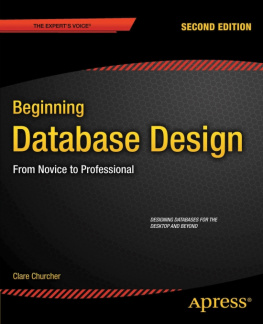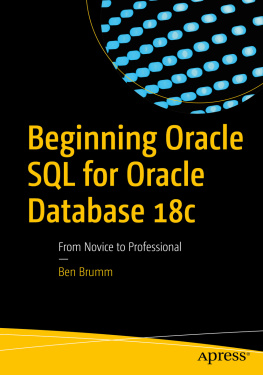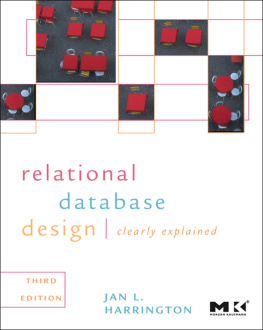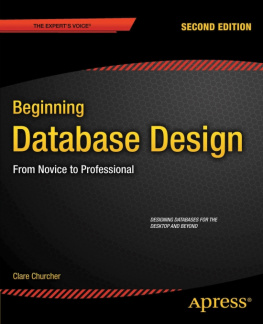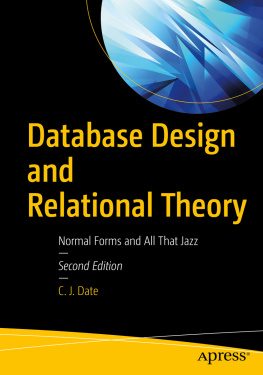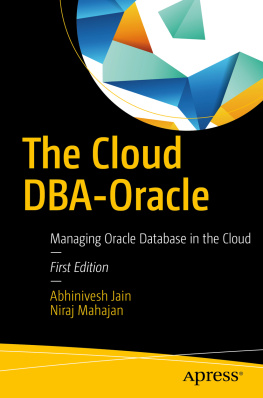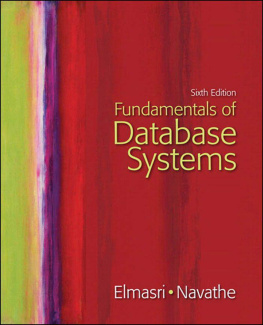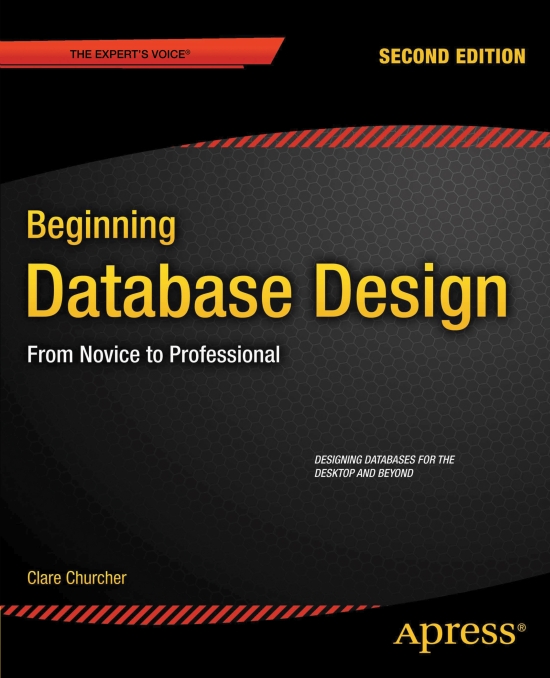Clare Churcher - Beginning Database Design: From Novice to Professional
Here you can read online Clare Churcher - Beginning Database Design: From Novice to Professional full text of the book (entire story) in english for free. Download pdf and epub, get meaning, cover and reviews about this ebook. year: 2012, publisher: Apress, genre: Computer. Description of the work, (preface) as well as reviews are available. Best literature library LitArk.com created for fans of good reading and offers a wide selection of genres:
Romance novel
Science fiction
Adventure
Detective
Science
History
Home and family
Prose
Art
Politics
Computer
Non-fiction
Religion
Business
Children
Humor
Choose a favorite category and find really read worthwhile books. Enjoy immersion in the world of imagination, feel the emotions of the characters or learn something new for yourself, make an fascinating discovery.
- Book:Beginning Database Design: From Novice to Professional
- Author:
- Publisher:Apress
- Genre:
- Year:2012
- Rating:3 / 5
- Favourites:Add to favourites
- Your mark:
Beginning Database Design: From Novice to Professional: summary, description and annotation
We offer to read an annotation, description, summary or preface (depends on what the author of the book "Beginning Database Design: From Novice to Professional" wrote himself). If you haven't found the necessary information about the book — write in the comments, we will try to find it.
Beginning Database Design, Second Edition provides short, easy-to-read explanations of how to get database design right the first time. This book offers numerous examples to help you avoid the many pitfalls that entrap new and not-so-new database designers. Through the help of use cases and class diagrams modeled in the UML, youll learn to discover and represent the details and scope of any design problem you choose to attack.
Database design is not an exact science. Many are surprised to find that problems with their databases are caused by poor design rather than by difficulties in using the database management software. Beginning Database Design, Second Edition helps you ask and answer important questions about your data so you can understand the problem you are trying to solve and create a pragmatic design capturing the essentials while leaving the door open for refinements and extension at a later stage. Solid database design principles and examples help demonstrate the consequences of simplifications and pragmatic decisions. The rationale is to try to keep a design simple, but allow room for development as situations change or resources permit.
- Provides solid design principles by which to avoid pitfalls and support changing needs
- Includes numerous examples of good and bad design decisions and their consequences
- Shows a modern method for documenting design using the Unified Modeling Language
- Avoid the most common pitfalls in database design.
- Create clear use cases from project requirements.
- Design a data model to support the use cases.
- Apply generalization and specialization appropriately.
- Secure future flexibility through a normalized design.
- Ensure integrity through relationships, keys, and constraints.
- Successfully implement your data model as a relational schema.
Beginning Database Design, Second Edition is aimed at desktop power users, developers, database administrators, and others who are charged with caring for data and storing it in ways that preserve its meaning and integrity. Desktop users will appreciate the coverage of Excel as a plausible database for research systems and lab environments. Developers and database designers will find insight from the clear discussions of design approaches and their pitfalls and benefits. All readers will benefit from learning a modern notation for documenting designs that is based upon the widely used and accepted Universal Modeling Language.
Table of Contents- What Can Go Wrong?
- Guided Tour of the Development Process
- Initial Requirements and Use Cases
- Learning from the Data Model
- Developing a Data Model
- Generalization and Specialization
- From Data Model to Relational Schema
- Normalization
- More on Keys and Constraints
- Queries
- User Interface
- Other Implementations
Clare Churcher: author's other books
Who wrote Beginning Database Design: From Novice to Professional? Find out the surname, the name of the author of the book and a list of all author's works by series.

